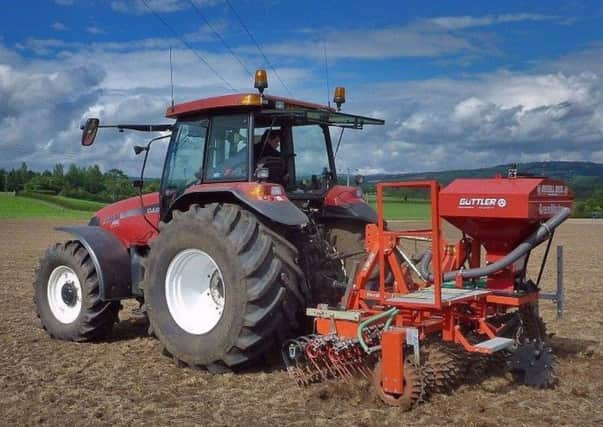DAERA Notes: Beef and sheep


This ensures the reseed has the best chance to succeed and may allow at least one grazing pre-winter. Grazing promotes plant tillering, giving quicker ground cover. It also allows for a post-emergence spray to be used for weed control five to six weeks post-sowing. Targeting weeds at this early stage, before significant root development occurs, increases the rate of success.
It is important soil pH, phosphorus (P) and potassium (K) are at optimum levels to achieve a good reseed. Aim for a pH of 6.3, a P index of 2+ and a K index of 2-. For soils with P and K indices of 2+ and 2- the recommended P and K application rates are 50 and 60 kg per hectare respectively. Adopting an appropriate fertiliser and liming strategy is vital to sustain the new sward and minimise the re-occurrence of weeds and less productive grass species.
Advertisement
Hide AdAdvertisement
Hide AdDecide on a cultivation technique that best suits the particular type of land. Conventional ploughing is often the best however, where soil is shallow and stoney, a min-till approach is more appropriate. The more common form of min-till involves discing (two to three passes in alternate directions) and/or harrowing, followed by sowing the seed. It is important to graze or mow/top tightly to minimise the amount of thrash in the sward. Direct drilling into an existing sward is also an option. This usually involves the seed being dropped into a shallow channel created by a disc. The aim when direct drilling is to minimise competition from the existing sward. For this reason, direct drilling straight after silage harvest or after the sward is tightly grazed maximises success rate. Ploughing, where possible, will act as a remedy for compaction and should also help with drainage.
Lungworm
Lungworm cases generally peak in July/August. Monitor young stock in particular and watch out for coughing and panting after light exercise/running. In more extreme cases neck extension and mouth breathing are seen and damage is often irreversible. Although more common in young stock, cases in cows have become more common in recent years where natural immunity has not had a chance to develop properly.
Remove the bull
Spring calving herds will be coming to the end of the breeding season on most farms. A cow served on the 18 July and assuming an average gestation period of 286 days, will calve on the last day of April next year. Therefore if you don’t want any calves born in May next year remove the bull in mid-July.
Lameness
Foot rot and scald (inter-digital dermatitis) are the main causes of lameness in sheep, both of which are caused by the bacterium Dichelobacter nodosus. Scald is often treated using oxytetracycline aerosols in individual sheep or foot-bathing where several sheep are affected. For best results when foot-bathing allow sheep to stand in solutions for a short time rather than just running them through. Stand the sheep in a dry yard to allow the solution to dry. If using formalin, solutions above 5% can cause severe irritation, therefore avoid the practice of ‘topping up’ footbaths. Mix accurately and avoid solutions over 3%.
Advertisement
Hide AdAdvertisement
Hide AdFoot rot, unlike scald, extends to under-run the hoof wall or sole and is accompanied by a characteristic foul smell. Foot-bathing may limit the spread of foot rot in the early stages but is not an effective treatment. As contagious ovine digital dermatitis, another cause of lameness, can sometimes be hard to distinguish from foot rot it is important to consult your vet to get a correct diagnosis. Appropriate quarantine protocols for purchased sheep, along with a strict culling policy for persistently lame sheep, will also help control the problem.